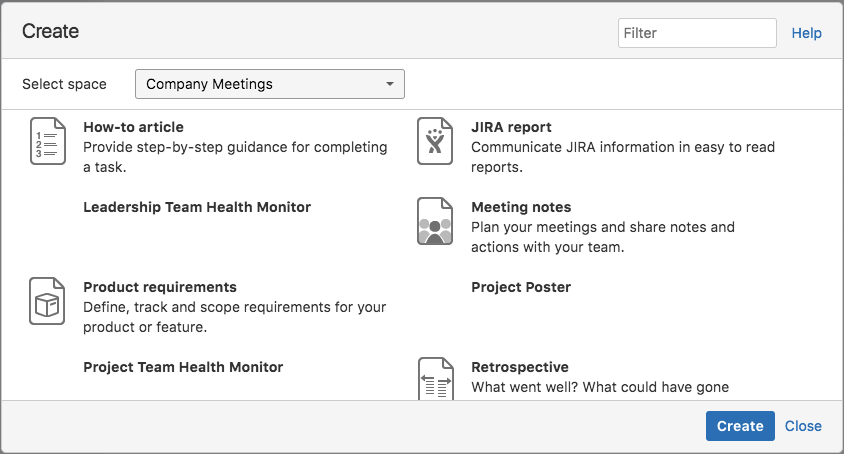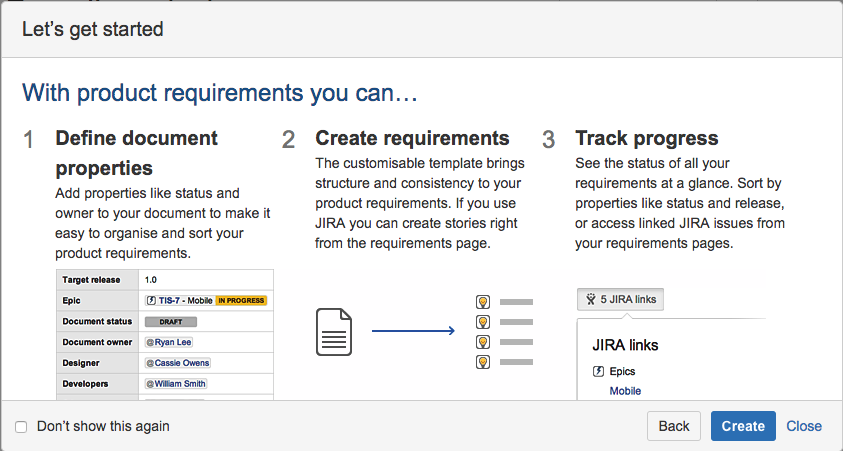Atlassian Confluence For Managing Communications
Confluence, perhaps a lesser used application by Atlassian when compared to Jira, seems to be referred to by everyone who wants to use effectively, but is sometimes left out when the appropriate time comes.
Why Use Confluence?
There are a number of uses for Confluence, especially if you are already using Jira and other related Atlassian applications. The main point to keep in mind though, is that it can keep your Project’s Meeting Notes, Emails, Requirements, Retrospectives, etc., all in one place. Why use folders and documents that no one else will see or use, on your local PC when they can all be shared and kept neatly organized on a wiki page, never to be lost. Further to this, it makes those notes and attachments easily searchable when the time comes.
Confluence’s setup is very similar to any page or content building application, only it has a powerhouse of tools that will allow for everyone (or at least those you provide permission access) to access, download, copy, update, and print to file (either in Word, or PDF format).
Will It Make Your Team More Agile?
It certainly is a tool that can make your team become more Agile. That is to say it will not make your team Agile on it’s own, but taking steps to bring in more transparent, automated, and open communications for Agile ceremonies such as Sprint Planning, Sprint Reviews, Daily Scrums, Retrospectives, etc., why not use those respective sections to keep everything tidy. If there are important notes to take down, why not use Confluence’s already built-in features to link and create a page respectively.
A Wide Variety of Templates at Your Fingertips!
Not only does it provide templates for pages regarding the type of meeting you will have, but within those pages you have pre-filled and preset fields ready to be updated.
Examples of page Templates:

Some of the examples of templates we can find are:
- Product Requirement pages, allow your team to define the document properties, create the requirements, and then track progress. The best part is that these will all link to your Jira instance and tickets automatically
- Jira Report pages that provide a pre-filled page that can outline the status of your existing tickets from your project.
- Meeting Notes pages that provide a pre-filled page with dates and listed actions and tasks that any member of the team can be attached to.
- Retrospective pages that pre-fill the “What did we do well?” and “What should we have done better?” discussion sections for your retrospectives

Common features that can be used in any of the pages above are
- The use of macros, of which Confluence has many. But some of the more useful macros, allow your team members to “mention” another. This will allow those who are mentioned to receive an email about the update on the page. Therefore, the process of communication is already automated through this macro.
- Add member to “watch” a page. Do you want to be sure that specific members of your project will be informed? They can easily be added as a “watcher” to that page, so that any update will automatically be emailed to them. Not only will they receive the link to that page, but they will also get to see what was changed, added, or deleted from that page.
- Page versioning. Did you just notice you messed up your update on the page? No worries, Confluence keeps versions of your page automatically, so that you can revert back to the previous version. No information is lost, unless you deliberately deleted it of course.
Of the many features that Confluence has to streamline communications within your project, those mentioned above are only a few. If you would like to learn more about how it can be fully integrated or used, be sure to look us up and we’ll gladly provide some insight and tips on best practices for it’s use.


